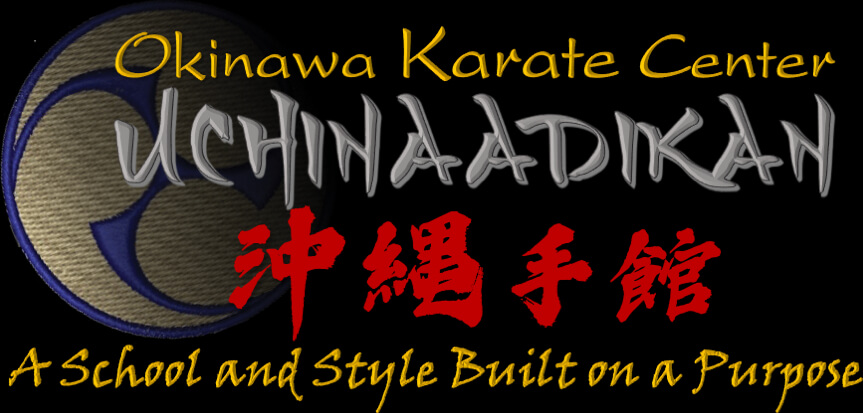The Many Modes of Kata, As Revealed by Shihan Rusty McMains
Throughout my late teens and early twenties, I was an ardent student of Shito-Ryu, a school of traditional Okinawa Karatedo. One of the pillars of traditional Karatedo study is the discipline of kata, a memorized sequence of movements that serves as a ‘zip drive’ of technique, information, body mechanics, and a way of conditioning the body and mind.
I would practice kata for hours and hours, until the movements became second nature. I was considered ‘good’ at kata. What constituted knowing a kata according to my school (dojo), was being able to perform all the movements with impressive speed, power, flexibility, precision, and appropriate timing. That was ‘doing’ the kata. There were two layers of the kata as well. Once you could ‘do’ the kata, and then you would learn a few bunkai (applications), the teacher’s interpretation of the fighting techniques contained within the kata, as applied in real combat, theoretically. And that was it. Then you would move on to the next kata...
Fast forward 15+ years, my wife and I are now living in Houston, Texas. By chance, we discovered a Karate school with the relatively unassuming name, ‘Okinawa Karate Center’. This dojo that taught an even older discipline called GoJu-Ryu Karate-Jutsu. Apparently, the teacher was a Master, Shihan. Sounding interesting, I decided to reinvigorate my study and give it a try. As we began training with the teacher (sensei), Shihan Rusty McMains, I began to realize that this school was fundamentally different from any of the other traditional Okinawa Karate style dojo I had experienced in the past. I didn’t even get to kata training until after a few months, and when I finally did have the privilege of receiving individual instruction from Shihan McMains, a whole new world of kata opened up before my very eyes.
Unlike my previous training, my beginning experiences with kata under Shihan McMains didn’t boil down to just memorization of a series of isolated movements, but rather served as the doorway to an entire ‘secret garden’ of thought, kinesthetics, kinesthesia, mechanics, energy, and body control, all starting with the first twitch of a muscle. At first, this was daunting and frustrating, ‘I can’t even start one step of this kata the right way!’. Using one of Shihan McMains’ analogies, the power and effectiveness gradually began to show through much like a statue emerging from a block of marble.
As mentioned above, my early exposure to Karate kata had consisted of two ‘layers’: learning how to perform the kata itself, then learning a few bunkai. During my trainings with Shihan McMains, I realized that the kata had within itself many, many more dimensions or layers, that, when compounded with the history and depth of the embedded techniques themselves meant an exponential increase in complexity, application, conditioning, power, and fighting technique possibilities. One kata can be trained within a plethora of different training‘modes’. Here are a few examples of the many training modes of kata, as revealed by Shihan McMains:
- The Flymode (defined drill to develop focus, quickness and precision)
- Against Wall mode (emphasizing structure and posture)
- Implode/Explode mode (brings out the essence of GoJu)
- Neko-Ashi Transitioning mode (reveals how to move from stance to stance)
- Cuttng/Slicing mode (a mental and physical device that emphasizes the destructive purpose of hand and arm movement (Ju)over the usual hard (Go) blocking/striking)
- The Box mode (the spatial nature of kata)
- Fluid mode (the continuous, un-halting performance of the kata)
- Capturing mode (Application training device that reveals a specific side to your intent and movement during the kata)
- Head-Shoulder-Elbow-Knee Movement mode (emphasizes connected body mechanics and mechanical alignment in transition)
- Open the Door mode (demonstrates how the hands, arms, and shoulders guide the rest of the body)...and many more.
To further compound the complexity, every technique within a kata, down to the slightest turn of a hand, has a specific mechanic, effectiveness, meaning and intent that must be understood. Otherwise, the real purpose and power of the art is lost, rendering kata to a mere dance routine or callisthenic. This allows kata to become a framework for study. To further demonstrate, let’s do the math using Saifa kata.
There are approximately 22 stepping movements, and 28 hand/arm movements. Within each of these individual movements and techniques, there can be 2-3-4 ‘fine’,or ‘micro’ movements within each and are key to the effectiveness of that technique. That can amount to upwards of 100+embedded techniques, or mechanics within this kata. Then multiply that times the number of different Modes one can apply to their kata training, and we arrive at a number of iterations that goes into the thousands! A galaxy away from just ‘doing the kata’. The statement, “I’m good at Kata”, has a whole new meaning.
While this may sound intimidating, if not downright impossible, what we have to realize is this is GoJu-Ryu Karate-Jutsu. Like Classical music, Burgundian wine, Law, or any art, study, discipline or science, GoJu-Ryu Karate-Jutsu has developed over the course of hundreds and even thousands of years, through the minds and lives of many different people, and with as many facets as a diamond. Moreover, just like any living science, it continues to grow and evolve. What’s fascinating to me about Shihan McMains’ teaching is the sense that the curtain is always being pulled away, providing real insight into an art that traces back hundreds and hundreds of years, combined with the remarkable visions of a modern master of martial science. And therein lies the real power.
‹ Back




 ·
· 